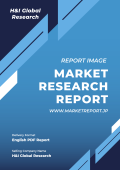目次
第1章. グローバル骨&関節健康サプリメント市場 概要
1.1. グローバル市場規模と予測(2022–2032)
1.2. 地域別概要
1.3. セグメント別概要
1.3.1. タイプ別
1.3.2. 流通チャネル別
1.3.3. 形態別
1.4. 主要な動向
1.5. 不況の影響
1.6. 分析家の推奨事項と結論
第2章 グローバル骨&関節健康サプリメント市場定義と研究仮定
2.1. 研究目的
2.2. 市場定義
2.3. 研究仮定
2.3.1. 対象範囲と除外基準
2.3.2. 制限事項
2.3.3. 供給側分析
2.3.3.1. 原材料の入手可能性
2.3.3.2. 製造・包装インフラ
2.3.3.3. 規制環境
2.3.3.4. 市場競争
2.3.3.5. 経済的実現可能性(消費者視点)
2.3.4. 需要側分析
2.3.4.1. 健康とウェルネス動向
2.3.4.2. 製剤技術の発展
2.3.4.3. 消費者の認知度と受容度
2.3.4.4. 流通チャネルの進化
2.4. 推定手法
2.5. 調査対象期間
2.6. 通貨換算レート
第3章. グローバル骨&関節健康サプリメント市場動向
3.1. 市場ドライバー
3.1.1. 世界的な高齢化と骨粗鬆症の増加
3.1.2. 予防栄養への意識の高まり
3.1.3. 主要な栄養素を支持する臨床的証拠の拡大
3.2. 市場課題
3.2.1. 地域間の規制の相違
3.2.2. 品質管理と不正混入の懸念
3.2.3. 分散した流通モデル
3.3. 市場機会
3.3.1. クリーンラベルと植物由来の配合におけるイノベーション
3.3.2. デジタルパーソナライゼーションとAIを活用した栄養プロファイリング
3.3.3. D2Cサブスクリプションとテレヘルスパートナーシップの拡大
第4章 グローバル骨と関節健康サプリメント市場産業分析
4.1. ポーターの5つの力モデル
4.1.1. 供給者の交渉力
4.1.2. 購入者の交渉力
4.1.3. 新規参入の脅威
4.1.4. 代替品の脅威
4.1.5. 競合企業の競争
4.1.6. ポーターの5つの力分析の未来志向的アプローチ
4.1.7. 5つの力の影響分析
4.2. PESTEL分析
4.2.1. 政治
4.2.2. 経済的
4.2.3. 社会
4.2.4. 技術的
4.2.5. 環境
4.2.6. 法的
4.3. 主要な投資機会
4.4. 主要な成功戦略
4.5. 破壊的トレンド
4.6. 業界専門家見解
4.7. アナリストの推奨事項と結論
第5章. グローバル骨&関節健康サプリメント市場規模と予測(タイプ別)、2022–2032
5.1. セグメントダッシュボード
5.2. タイプ別売上高動向分析(2022年と2032年、USD億ドル)
5.2.1. ビタミンD
5.2.2. ビタミンK
5.2.3. カルシウム
5.2.4. コラーゲン
5.2.5. オメガ-3脂肪酸
5.2.6. グルコサミン・コンドロイチン
第6章. グローバル骨&関節健康サプリメント市場規模と予測(販売チャネル別)、2022–2032
6.1. セグメントダッシュボード
6.2. 流通チャネル別売上高動向分析(2022年と2032年、USD億ドル)
6.2.1. オンライン
6.2.2. オフライン
第7章. 骨&関節健康サプリメント市場規模と予測(形態別)、2022–2032
7.1. セグメントダッシュボード
7.2. 製品形態別売上高動向分析(2022年と2032年、USD億ドル)
7.2.1. 錠剤
7.2.2. カプセル
7.2.3. 液体
7.2.4. 粉末
第8章. グローバル骨&関節健康サプリメント市場規模と地域別予測(2022年~2032年)
8.1. 北米
8.1.1. アメリカ
8.1.1.1. タイプ別内訳、2022–2032
8.1.1.2. 流通チャネル別内訳、2022–2032
8.1.2. カナダ
8.2. ヨーロッパ
8.2.1. イギリス
8.2.2. ドイツ
8.2.3. フランス
8.2.4. スペイン
8.2.5. イタリア
8.2.6. ヨーロッパその他
8.3. アジア太平洋
8.3.1. 中国
8.3.2. インド
8.3.3. 日本
8.3.4. オーストラリア
8.3.5. 大韓民国
8.3.6. アジア太平洋地域その他
8.4. ラテンアメリカ
8.4.1. ブラジル
8.4.2. メキシコ
8.4.3. ラテンアメリカその他
8.5. 中東・アフリカ
8.5.1. サウジアラビア
8.5.2. 南アフリカ
8.5.3. 中東・アフリカその他の地域
第9章 競合分析
9.1. 主要企業SWOT分析
9.1.1. アムウェイ・コーポレーション
9.1.2. グラクソスミスクライン・プラシデット
9.1.3. レキットベンキーザー・グループ・プラシフィカ
9.2. 主要な市場戦略
9.3. 企業プロファイル
9.3.1. アムウェイ・コーポレーション
9.3.1.1. 主要情報
9.3.1.2. 概要
9.3.1.3. 財務(データ入手状況により異なります)
9.3.1.4. 製品概要
9.3.1.5. 市場戦略
9.3.2. グラクソスミスクライン・プラシデット・リミテッド
9.3.3. レキットベンキーザー・グループ・プラシフィカ
9.3.4. ベイヤー AG
9.3.5. ニュートラマックス・ラボラトリーズ社
9.3.6. アボット・ラボラトリーズ
9.3.7. NOW Health Group, Inc.
9.3.8. ネイチャーズバウンティ社
9.3.9. サノフィ S.A.
9.3.10. ハーバライフニュートリション社
9.3.11. チャーチ&ドワイト社
9.3.12. バイオテックUSA Kft.
9.3.13. ヴィタル・プロテインズ・エルエルシー
9.3.14. ネスレ・ヘルスサイエンス
9.3.15. バイオビア
第10章 研究プロセス
10.1. 研究プロセス
10.1.1. データマイニング
10.1.2. 分析
10.1.3. 市場推定
10.1.4. 検証
10.1.5. 公開
10.2. 研究属性
10.1.2. 分析
表の一覧
表1. グローバル市場レポートの範囲
表2. 地域別市場規模推計と予測(2022年~2032年、USD億ドル)
表3. タイプ別市場規模推計と予測(2022年~2032年、USD億ドル)
表4. 流通チャネル別市場規模推計と予測(2022年~2032年、USD億ドル)
表5. 形態別市場規模予測(2022~2032年、億米ドル)
表6. 米国市場予測(2022年~2032年)(億ドル)
表7. 米国市場セグメント別推定値と予測、2022–2032年(USD億ドル)
表8. カナダ市場の見積もりおよび予測、2022–2032年(USD億ドル)
表9. ドイツ市場の見積もりおよび予測、2022–2032年(USD億ドル)
表10. イギリス市場の見積もりおよび予測、2022–2032年(USD億ドル)
図表一覧
図1. 研究方法論
図2. 市場推定手法
図3. 市場規模推計および予測方法
図4. 2023年の主要な動向
図5. 2022~2032年の成長見通し
図6. ポーターの5つの力モデル
図7. PESTEL分析
図8. バリューチェーン分析
図9. セグメント別市場(2022年と2032年)
図10. 地域別概要 2022年と2032年
図11. 2023年の企業市場シェア分析
…
Chapter 1. Global Bone and Joint Health Supplements Market Executive Summary
1.1. Global Market Size & Forecast (2022–2032)
1.2. Regional Summary
1.3. Segmental Summary
1.3.1. By Type
1.3.2. By Distribution Channel
1.3.3. By Form
1.4. Key Trends
1.5. Recession Impact
1.6. Analyst Recommendation & Conclusion
Chapter 2. Global Bone and Joint Health Supplements Market Definition and Research Assumptions
2.1. Research Objective
2.2. Market Definition
2.3. Research Assumptions
2.3.1. Inclusion & Exclusion
2.3.2. Limitations
2.3.3. Supply-Side Analysis
2.3.3.1. Ingredient Availability
2.3.3.2. Manufacturing & Packaging Infrastructure
2.3.3.3. Regulatory Environment
2.3.3.4. Market Competition
2.3.3.5. Economic Viability (Consumer Perspective)
2.3.4. Demand-Side Analysis
2.3.4.1. Health & Wellness Trends
2.3.4.2. Technological Advancements in Formulation
2.3.4.3. Consumer Awareness & Acceptance
2.3.4.4. Distribution Channel Evolution
2.4. Estimation Methodology
2.5. Years Considered for the Study
2.6. Currency Conversion Rates
Chapter 3. Global Bone and Joint Health Supplements Market Dynamics
3.1. Market Drivers
3.1.1. Aging global population and rise in osteoporosis
3.1.2. Increased awareness of preventive nutrition
3.1.3. Growth of clinical evidence supporting key nutrients
3.2. Market Challenges
3.2.1. Regulatory disparities across regions
3.2.2. Quality control and adulteration concerns
3.2.3. Fragmented distribution models
3.3. Market Opportunities
3.3.1. Innovation in clean-label and plant-based formulations
3.3.2. Digital personalization and AI-driven nutrition profiling
3.3.3. Expansion of D2C subscription and telehealth partnerships
Chapter 4. Global Bone and Joint Health Supplements Market Industry Analysis
4.1. Porter’s Five Forces Model
4.1.1. Bargaining Power of Suppliers
4.1.2. Bargaining Power of Buyers
4.1.3. Threat of New Entrants
4.1.4. Threat of Substitutes
4.1.5. Competitive Rivalry
4.1.6. Futuristic Approach to Porter’s Five Forces
4.1.7. Five Forces Impact Analysis
4.2. PESTEL Analysis
4.2.1. Political
4.2.2. Economic
4.2.3. Social
4.2.4. Technological
4.2.5. Environmental
4.2.6. Legal
4.3. Top Investment Opportunities
4.4. Top Winning Strategies
4.5. Disruptive Trends
4.6. Industry Expert Perspective
4.7. Analyst Recommendation & Conclusion
Chapter 5. Global Bone and Joint Health Supplements Market Size & Forecasts by Type, 2022–2032
5.1. Segment Dashboard
5.2. Revenue Trend Analysis by Type, 2022 & 2032 (USD Billion)
5.2.1. Vitamin D
5.2.2. Vitamin K
5.2.3. Calcium
5.2.4. Collagen
5.2.5. Omega-3 Fatty Acid
5.2.6. Glucosamine-Chondroitin
Chapter 6. Global Bone and Joint Health Supplements Market Size & Forecasts by Distribution Channel, 2022–2032
6.1. Segment Dashboard
6.2. Revenue Trend Analysis by Distribution Channel, 2022 & 2032 (USD Billion)
6.2.1. Online
6.2.2. Offline
Chapter 7. Global Bone and Joint Health Supplements Market Size & Forecasts by Form, 2022–2032
7.1. Segment Dashboard
7.2. Revenue Trend Analysis by Form, 2022 & 2032 (USD Billion)
7.2.1. Tablets
7.2.2. Capsules
7.2.3. Liquid
7.2.4. Powder
Chapter 8. Global Bone and Joint Health Supplements Market Size & Forecasts by Region, 2022–2032
8.1. North America
8.1.1. U.S.
8.1.1.1. By Type breakdown, 2022–2032
8.1.1.2. By Distribution Channel breakdown, 2022–2032
8.1.2. Canada
8.2. Europe
8.2.1. UK
8.2.2. Germany
8.2.3. France
8.2.4. Spain
8.2.5. Italy
8.2.6. Rest of Europe
8.3. Asia Pacific
8.3.1. China
8.3.2. India
8.3.3. Japan
8.3.4. Australia
8.3.5. South Korea
8.3.6. Rest of Asia Pacific
8.4. Latin America
8.4.1. Brazil
8.4.2. Mexico
8.4.3. Rest of Latin America
8.5. Middle East & Africa
8.5.1. Saudi Arabia
8.5.2. South Africa
8.5.3. Rest of Middle East & Africa
Chapter 9. Competitive Intelligence
9.1. Key Company SWOT Analysis
9.1.1. Amway Corporation
9.1.2. GlaxoSmithKline plc
9.1.3. Reckitt Benckiser Group plc
9.2. Top Market Strategies
9.3. Company Profiles
9.3.1. Amway Corporation
9.3.1.1. Key Information
9.3.1.2. Overview
9.3.1.3. Financial (Subject to Data Availability)
9.3.1.4. Product Summary
9.3.1.5. Market Strategies
9.3.2. GlaxoSmithKline plc
9.3.3. Reckitt Benckiser Group plc
9.3.4. Bayer AG
9.3.5. Nutramax Laboratories, Inc.
9.3.6. Abbott Laboratories
9.3.7. NOW Health Group, Inc.
9.3.8. The Nature’s Bounty Co.
9.3.9. Sanofi S.A.
9.3.10. Herbalife Nutrition Ltd.
9.3.11. Church & Dwight Co., Inc.
9.3.12. BioTechUSA Kft.
9.3.13. Vital Proteins LLC
9.3.14. Nestlé Health Science
9.3.15. Biovea
Chapter 10. Research Process
10.1. Research Process
10.1.1. Data Mining
10.1.2. Analysis
10.1.3. Market Estimation
10.1.4. Validation
10.1.5. Publishing
10.2. Research Attributes
*** 免責事項 ***
https://www.globalresearch.co.jp/disclaimer/











